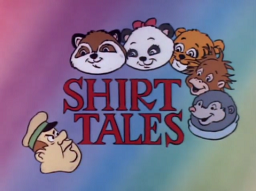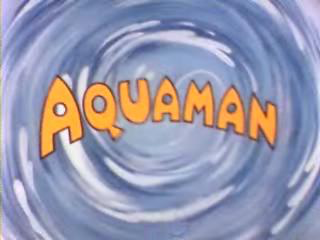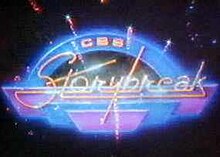
Scooby-Doo is an American media franchise owned by Warner Bros. Entertainment and created in 1969 by writers Joe Ruby and Ken Spears through their animated series, Scooby-Doo, Where Are You!, for Hanna-Barbera. The series features four teenagers: Fred Jones, Daphne Blake, Velma Dinkley, and Shaggy Rogers, and their talking Great Dane named Scooby-Doo, who solve mysteries involving supposedly supernatural creatures through a series of antics and missteps, while traveling using a brightly colored van called the "Mystery Machine". The franchise has several live-action films and shows.

Captain Kangaroo is an American children's television series that aired weekday mornings on the American television network CBS for 29 years, from 1955 to 1984, making it the longest-running nationally broadcast children's television program of its day. In 1986, the American Program Service integrated some newly produced segments into reruns of past episodes, distributing the newer version of the series to PBS and independent public stations until 1993.

Robert James Keeshan was an American television producer and actor. He created and played the title role in the children's television program Captain Kangaroo, which ran from 1955 to 1984, the longest-running nationally broadcast children's television program of its day. He also played the original Clarabell the Clown on the Howdy Doody television program.
"Saturday-morning cartoon" is a colloquial term for the original animated series and live-action programming that was typically scheduled on Saturday and Sunday mornings in the United States on the "Big Three" television networks. The genre's popularity had a broad peak from the mid-1960s through the mid-2000s; over time it declined, in the face of changing cultural norms, increased competition from formats available at all times, and heavier media regulations. In the final two decades of the genre's existence, Saturday-morning and Sunday-morning cartoons were primarily created and aired to meet regulations on children's television programming in the United States, or E/I. Minor television networks, in addition to the non-commercial PBS in some markets, continue to air animated programming on Saturday and Sunday while partially meeting those mandates.

Johnny Bravo is an American animated comedy television series created by Van Partible for Cartoon Network and distributed by Warner Bros. Domestic Television Distribution. The second of the network's Cartoon Cartoons, it aired from July 14, 1997, to August 27, 2004. The titular Johnny Bravo, who is loosely based on Elvis Presley and James Dean, is a blonde-haired sunglasses-wearing, muscular, and dimwitted young man who lives with his mother and attempts to get women to date him, though he always falls short because of his actions. He ends up in bizarre situations and predicaments, often accompanied by celebrity guest characters such as Donny Osmond or Adam West. Throughout its run, the show was known for its adult humor and pop culture references.

The Alvin Show is an American animated television series that aired on CBS in the early 1960s. This was the first series to feature the singing characters Alvin and the Chipmunks. The Alvin Show aired for one season, from October 4, 1961, to September 12, 1962 and was originally sponsored by General Foods through its Jell-O gelatin and Post Cereal brands. Although the series was created in color, it was initially telecast in black and white. It was later rebroadcast in color from 1962-65 for Saturday mornings on CBS and again Saturday mornings on NBC in 1979.

The Charlie Brown and Snoopy Show is an American animated television series featuring characters and storylines from the Charles M. Schulz comic strip Peanuts as first presented for television in the Peanuts animated specials. It aired Saturday mornings on the CBS network from 1983 to 1985.

The Bugs Bunny Show is a long-running American animated anthology television series hosted by Bugs Bunny that was mainly composed of theatrical Looney Tunes and Merrie Melodies cartoons released by Warner Bros. between 1948 and 1969. The show originally debuted as a primetime half-hour program on ABC in 1960, featuring three theatrical Looney Tunes cartoons with new linking sequences produced by the Warner Bros. Cartoons staff.

The New Scooby-Doo Movies is an American animated mystery comedy television series produced by Hanna-Barbera for CBS. It is the second television series in Scooby-Doo franchise, and follows the first incarnation, Scooby-Doo, Where Are You! It premiered on September 9, 1972, and ended on October 27, 1973, running for two seasons on CBS as the only hour-long Scooby-Doo series. Twenty-four episodes were produced, sixteen for the 1972–73 season and eight more for the 1973–74 season.

Jeannie is an American animated television series that originally aired for a 16-episode season on CBS from September 8 to December 22, 1973. It was produced by Hanna-Barbera in association with Screen Gems, and its founders William Hanna and Joseph Barbera are the executive producers. Despite being a spin-off of sorts of the television sitcom I Dream of Jeannie, Jeannie has little in common with its parent show. In this version, the title character is rescued on the beaches of southern California by a high school student, Corey Anders. Jeannie is accompanied by genie-in-training Babu, and they become companions to Corey and his best friend, Henry Glopp, both of whom also help Jeannie and Babu adjust to their new home as well as life in Los Angeles. The series was marketed towards a younger demographic than I Dream of Jeannie.

Shirt Tales are characters that were created in 1980 by greeting card designer Janet Elizabeth Manco and were featured on Hallmark Cards greeting cards. The characters were adapted into a 1982-1985 animated series for television, by Hanna-Barbera Productions, which aired on NBC.
Pac-Man is an American animated television series produced by Hanna-Barbera Productions and based on the Namco video game franchise of the same title. It premiered on ABC and ran for 44 episodes over two seasons from September 25, 1982, to November 5, 1983. It was the first cartoon based on a video game.

The Berenstain Bears is an animated comedy television series based on the children's book series of the same name by Stan and Jan Berenstain, produced by Southern Star/Hanna-Barbera Australia. It aired in the United States from September 14, 1985, to March 7, 1987 on CBS with 52 11-minute episodes in 26 half-hour shows produced. Reruns of the show would continue to air on the network until September 5, 1987. Each show consisted of two episodes, the first being an adaptation of one of the books, the second being an original story.
This is a list of adaptations in film, television, musical theater, and video games, based on characters from the Peanuts comic strip by Charles M. Schulz.

The New Adventures of Superman is a series of six-minute animated Superman adventures produced by Filmation that were broadcast Saturday mornings on CBS from September 10, 1966, to September 5, 1970. The 68 segments appeared as part of three different programs during that time, packaged with similar shorts featuring The Adventures of Superboy and other DC Comics superheroes.

The Adventures of Batman is an animated television series produced by Lou Scheimer's Filmation studios. It showcased the 12-minute Batman segments from The Batman/Superman Hour, sometimes broken up by and surrounding another cartoon from Filmation's fast-growing stream of superhero stars. A re-branded 30-minute version premiered on CBS on September 14, 1968, as Batman with Robin the Boy Wonder. This version was repackaged without the Superman and Superboy segments.

Aquaman is a Filmation animated series that premiered on CBS on September 9, 1967, and ended June 1970. It is a 30-minute version of The Superman/Aquaman Hour of Adventure, repackaged without the Superman and Superboy segments.

Dumb and Dumber is an animated series produced by Hanna-Barbera and New Line Television for ABC. It is based on the 1994 comedy film of the same name. It premiered in October 1995, making it the last Hanna-Barbera show to air on a television channel other than Cartoon Network.

Animaniacs is an American animated comedy musical television series created by Tom Ruegger for Fox's Fox Kids block in 1993, before moving to The WB in 1995, as part of its Kids' WB afternoon programming block, until the series ended on November 14, 1998. It is the second animated series produced by Steven Spielberg's Amblin Entertainment in association with Warner Bros. Animation, after Tiny Toon Adventures. It initially ran a total of 99 episodes, along with a feature-length film, Wakko's Wish. Reruns later aired on Cartoon Network from 1997 to 2001, Nickelodeon from 2001 to 2003, Nicktoons from 2003 to 2005, and Discovery Family from 2012 to 2014.
In regard to children's television programming, CBS has aired mostly animated series, such as the original versions of Scooby-Doo, Fat Albert and the Cosby Kids, Jim Henson's Muppet Babies, Garfield and Friends and the 1987 incarnation of Teenage Mutant Ninja Turtles. This article outlines the history of children's television programming on CBS including the various blocks and notable programs that have aired throughout the television network's history.
















